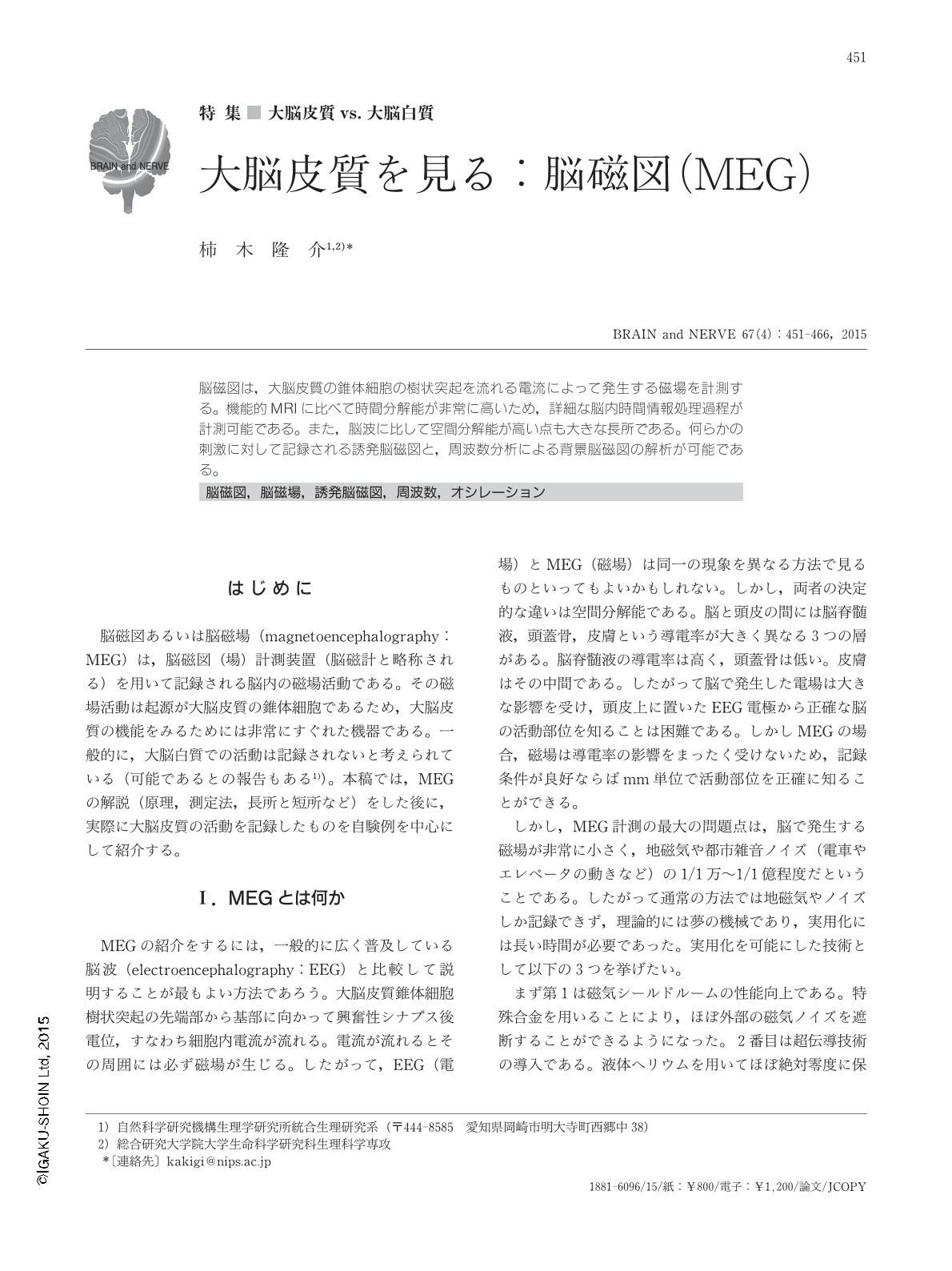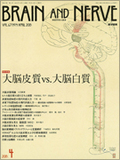Japanese
English
- 有料閲覧
- Abstract 文献概要
- 1ページ目 Look Inside
- 参考文献 Reference
脳磁図は,大脳皮質の錐体細胞の樹状突起を流れる電流によって発生する磁場を計測する。機能的MRIに比べて時間分解能が非常に高いため,詳細な脳内時間情報処理過程が計測可能である。また,脳波に比して空間分解能が高い点も大きな長所である。何らかの刺激に対して記録される誘発脳磁図と,周波数分析による背景脳磁図の解析が可能である。
Abstract
Cortical neurons are excited by signals from the thalamus that are conducted via thalamocortical fibers. As the cortex receives these signals, electric currents are conducted through the apical dendrites of pyramidal cells in the cerebral cortex. These electric currents generate magnetic fields. These electric and magnetic currents can be recorded by electroencephalography (EEG) and magnetoencephalography (MEG), respectively. The spatial resolution of MEG is higher than that of EEG because magnetic fields, unlike electric fields, are not affected by current conductivity. MEG also has several advantages over functional magnetic resonance imaging (fMRI). It (1) is completely non-invasive; (2) measures neuronal activity rather than blood flow or metabolic changes; (3) has a higher temporal resolution than fMRI on the order of milliseconds; (4) enables the measurement of stimulus-evoked and event-related responses; (5) enables the analysis of frequency (i.e., brain rhythm) response, which means that physiological changes can be analyzed spatiotemporally; and (6) enables the detailed analysis of results from an individual subject, which eliminates the need to average results over several subjects. This latter advantage of MEG therefore enables the analysis of inter-individual differences.

Copyright © 2015, Igaku-Shoin Ltd. All rights reserved.


